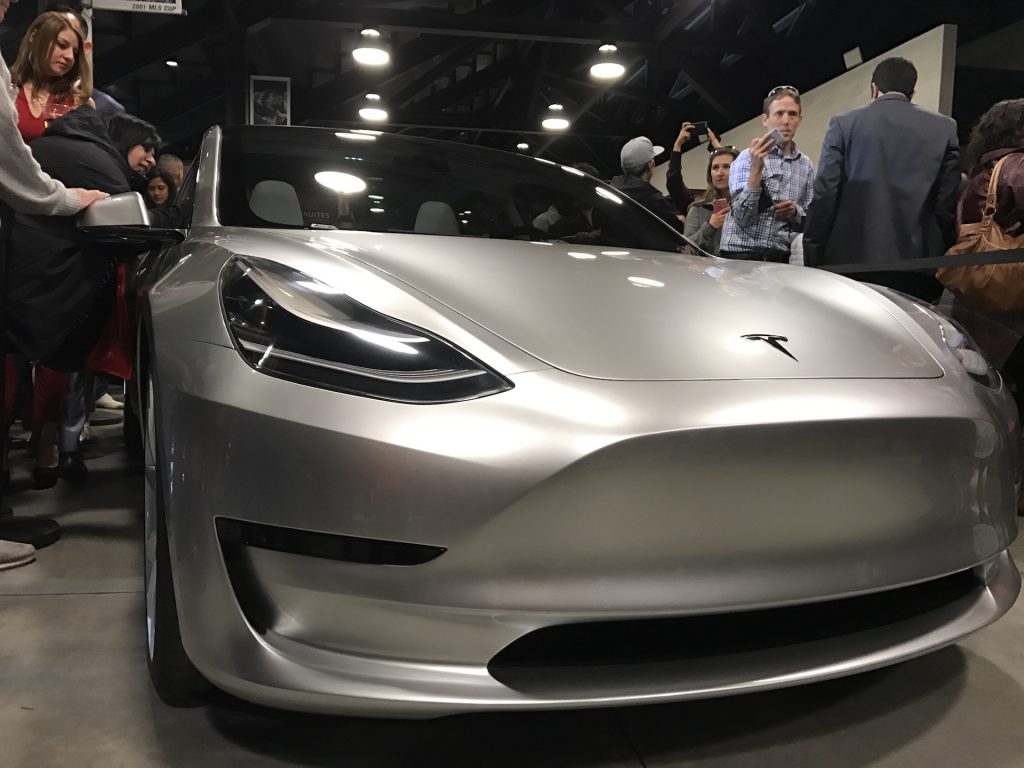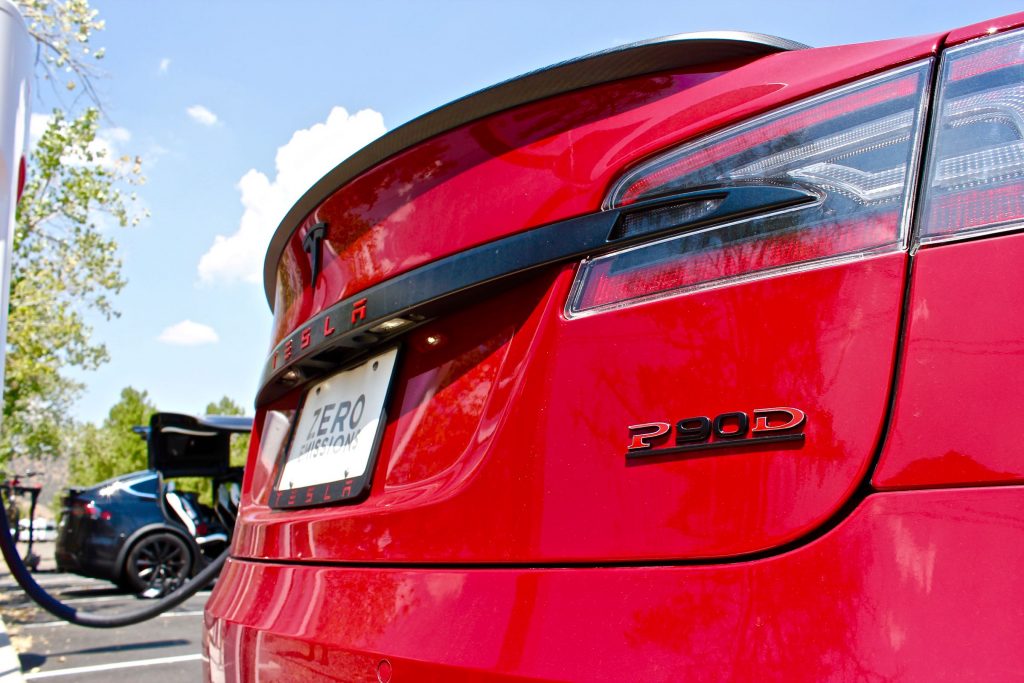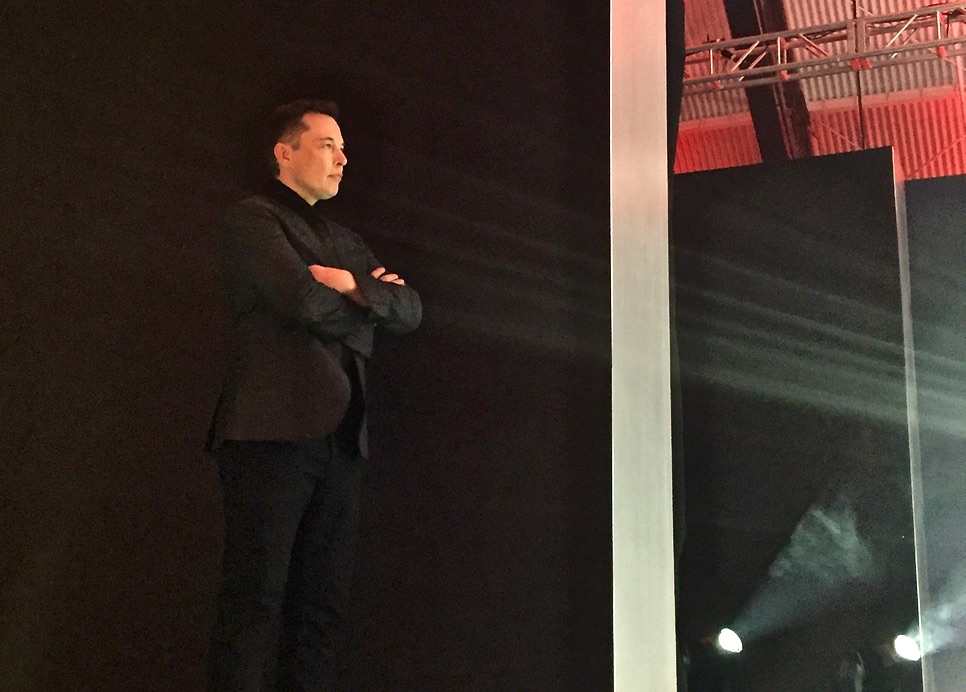News
Tesla Top 5 Week in Review: TSLA surge, 0-60 mph 2.05 sec, neural nets, and more

Tesla has been in the news a lot this week, as usual, but the biggest headlines surrounded its unexpectedly strong stock market performance. Another event that made the Tesla crowd happy was the release of a new over-the-air software update which removed a power limiting safety feature. In a related story, a team of creative folks reverse engineered the maximum theoretical acceleration of a car; if you didn’t read this story, you’ll be amazed what they found out. Tesla CEO Elon Musk was a featured speaker in the UAE at the World Summit, which coincided with Tesla’s entrance into that market. And Musk also offered some fascinating insights about artificial intelligence and what the future might look like if humans don’t stay current with AI’s potential. Here are those stories.
Tesla (TSLA) shares surge across 52-week high as Model 3 production takes stage
Over a six month period, Tesla shares rose by nearly 25% and traded this week above $280. This is within grasp of the company’s all-time high, with a market cap that has grown by $10 billion. Investors have begun to give more weight to Tesla’s highly anticipated Model 3, which is slated to begin production on February 20. Development and planned timeline launch for the Model 3 look good and are critical to Tesla’s continued success moving forward. If all goes as hoped, the vehicle will help take the company from producing about 100,000 cars annually today to 500,000 annually in 2018.
Tesla removes performance restrictions in latest software update
Tesla’s policy on limiting the power output of its performance vehicles due to frequency patterns of launch mode engagement and maximum power levels has ended. This week, the car manufacturer pushed a software update to its customers that removes power limiting on Performance variants of its Model S and Model X. Tesla continued to remind its customers that prudent habits can prevent premature wear of components due to high stress launches. Tesla confirmed that they will now “monitor the condition of the powertrain and display an alert if service is needed so we can take proactive steps, such as by replacing parts if necessary, to maintain the vehicle’s performance.”
Math says, Tesla’s “Maximum Plaid” mode could achieve 0-60 mph in 2.05 seconds
In this article scoop, Teslarati related how a group of really creative folks at Engineering Explained decided to reverse engineer the maximum theoretical acceleration that a Tesla Model S could achieve. The team worked somewhat counter-intuitively. They began by calculating the maximum deceleration first. Then they moved back up to acceleration, focusing on a stock Model S with stock tires. The result? Tesla’s next generation Roadster with “Maximum Plaid” mode may have the ability to accelerate from 0-60 mph in 2.05 seconds.
Elon Musk presents at the Tesla Launch Event in the UAE (Video)
Tesla CEO Elon Musk was a celebrity speaker at this week’s World Government Summit in Dubai. In his remarks, Musk noted, “We expect to invest tens of millions of dollars in the UAE for charging, service and support infrastructures. By next year, you’ll be able to travel anywhere in the GCC with an electric vehicle.” As he spoke about sustainability, Musk acknowledged that EV availability wouldn’t necessarily translate into immediate sales, as the region still considers fossil fuel-powered cars to be the preferred method of transportation. Following Musk’s visit, the UAE announced that it had ordered 200 Model S and Model X vehicles for use as a limousine service.
Elon Musk says human brains need to merge with AI to stay competitive with machines
As artificial intelligence technology improves, as some point humans will become irrelevant. That’s why we must learn to merge with machines, according to Tesla CEO Elon Musk, who explained some of his beliefs about the dangers of artificial intelligence this week. “I think we need to be very careful in how we adopt artificial intelligence and that we make sure that researchers don’t get carried away,” he stated. “Sometimes what will happen is a scientist will get so engrossed in their work that they don’t really realize the ramifications of what they’re doing.” Musk described how humans can mitigate those dangers through a type of merger of biological and machine intelligence, which he said would solve the problem of humans losing control over artificial intelligence.

News
Tesla starts showing how FSD will change lives in Europe
Local officials tested the system on narrow country roads and were impressed by FSD’s smooth, human-like driving, with some calling the service a game-changer for everyday life in areas that are far from urban centers.

Tesla has launched Europe’s first public shuttle service using Full Self-Driving (Supervised) in the rural Eifelkreis Bitburg-Prüm region of Germany, demonstrating how the technology can restore independence and mobility for people who struggle with limited transport options.
Local officials tested the system on narrow country roads and were impressed by FSD’s smooth, human-like driving, with some calling the service a game-changer for everyday life in areas that are far from urban centers.
Officials see real impact on rural residents
Arzfeld Mayor Johannes Kuhl and District Administrator Andreas Kruppert personally tested the Tesla shuttle service. This allowed them to see just how well FSD navigated winding lanes and rural roads confidently. Kruppert said, “Autonomous driving sounds like science fiction to many, but we simply see here that it works totally well in rural regions too.” Kuhl, for his part, also noted that FSD “feels like a very experienced driver.”
The pilot complements the area’s “Citizen Bus” program, which provides on-demand rides for elderly residents who can no longer drive themselves. Tesla Europe shared a video of a demonstration of the service, highlighting how FSD gives people their freedom back, even in places where public transport is not as prevalent.
What the Ministry for Economic Affairs and Transport says
Rhineland-Palatinate’s Minister Daniela Schmitt supported the project, praising the collaboration that made this “first of its kind in Europe” possible. As per the ministry, the rural rollout for the service shows FSD’s potential beyond major cities, and it delivers tangible benefits like grocery runs, doctor visits, and social connections for isolated residents.
“Reliable and flexible mobility is especially vital in rural areas. With the launch of a shuttle service using self-driving vehicles (FSD supervised) by Tesla in the Eifelkreis Bitburg-Prüm, an innovative pilot project is now getting underway that complements local community bus services. It is the first project of its kind in Europe.
“The result is a real gain for rural mobility: greater accessibility, more flexibility and tangible benefits for everyday life. A strong signal for innovation, cooperation and future-oriented mobility beyond urban centers,” the ministry wrote in a LinkedIn post.
News
Tesla China quietly posts Robotaxi-related job listing
Tesla China is currently seeking a Low Voltage Electrical Engineer to work on circuit board design for the company’s autonomous vehicles.

Tesla has posted a new job listing in Shanghai explicitly tied to its Robotaxi program, fueling speculation that the company is preparing to launch its dedicated autonomous ride-hailing service in China.
As noted in the listing, Tesla China is currently seeking a Low Voltage Electrical Engineer to work on circuit board design for the company’s autonomous vehicles.
Robotaxi-specific role
The listing, which was shared on social media platform X by industry watcher @tslaming, suggested that Tesla China is looking to fill the role urgently. The job listing itself specifically mentions that the person hired for the role will be working on the Low Voltage Hardware team, which would design the circuit boards that would serve as the nervous system of the Robotaxi.
Key tasks for the role, as indicated in the job listing, include collaboration with PCB layout, firmware, mechanical, program management, and validation teams, among other responsibilities. The role is based in Shanghai.
China Robotaxi launch
China represents a massive potential market for robotaxis, with its dense urban centers and supportive policies in select cities. Tesla has limited permission to roll out FSD in the country, though despite this, its vehicles have been hailed as among the best in the market when it comes to autonomous features. So far, at least, it appears that China supports Tesla’s FSD and Robotaxi rollout.
This was hinted at in November, when Tesla brought the Cybercab to the 8th China International Import Expo (CIIE) in Shanghai, marking the first time that the autonomous two-seater was brought to the Asia-Pacific region. The vehicle, despite not having a release date in China, received a significant amount of interest among the event’s attendees.
Elon Musk
Elon Musk and Tesla AI Director share insights after empty driver seat Robotaxi rides
The executives’ unoccupied tests hint at the rapid progress of Tesla’s unsupervised Robotaxi efforts.

Tesla CEO Elon Musk and AI Director Ashok Elluswamy celebrated Christmas Eve by sharing personal experiences with Robotaxi vehicles that had no safety monitor or occupant in the driver’s seat. Musk described the system’s “perfect driving” around Austin, while Elluswamy posted video from the back seat, calling it “an amazing experience.”
The executives’ unoccupied tests hint at the rapid progress of Tesla’s unsupervised Robotaxi efforts.
Elon and Ashok’s firsthand Robotaxi insights
Prior to Musk and the Tesla AI Director’s posts, sightings of unmanned Teslas navigating public roads were widely shared on social media. One such vehicle was spotted in Austin, Texas, which Elon Musk acknowleged by stating that “Testing is underway with no occupants in the car.”
Based on his Christmas Eve post, Musk seemed to have tested an unmanned Tesla himself. “A Tesla with no safety monitor in the car and me sitting in the passenger seat took me all around Austin on Sunday with perfect driving,” Musk wrote in his post.
Elluswamy responded with a 2-minute video showing himself in the rear of an unmanned Tesla. The video featured the vehicle’s empty front seats, as well as its smooth handling through real-world traffic. He captioned his video with the words, “It’s an amazing experience!”
Towards Unsupervised operations
During an xAI Hackathon earlier this month, Elon Musk mentioned that Tesla owed be removing Safety Monitors from its Robotaxis in Austin in just three weeks. “Unsupervised is pretty much solved at this point. So there will be Tesla Robotaxis operating in Austin with no one in them. Not even anyone in the passenger seat in about three weeks,” he said. Musk echoed similar estimates at the 2025 Annual Shareholder Meeting and the Q3 2025 earnings call.
Considering the insights that were posted Musk and Elluswamy, it does appear that Tesla is working hard towards operating its Robotaxis with no safety monitors. This is quite impressive considering that the service was launched just earlier this year.













